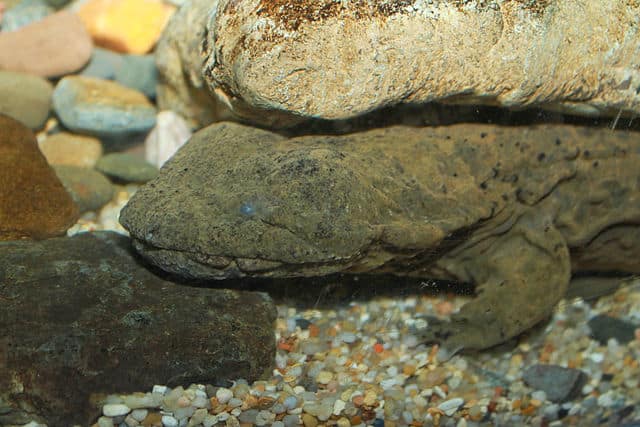Hellbender salamanders can only thrive in cool, clean water. Hellbender salamanders are listed as near threatened on the IUCN Red List of Threatened Species.
The Columbus Zoo and Aquarium and The Wilds wildlife sanctuary announced that they have released 91 eastern hellbender salamanders (Cryptobranchus a. alleganiensis) into the waters of eastern Ohio, bringing to 2,000 the number of the amphibians the two organizations have raised and released since 2012.
The eastern hellbender is a keystone species that requires pristine, clean water and pristine health habitats to survive. If the water becomes dirty, the salamander cannot thrive in it and they perish. The zoo and the sanctuary are returning the salamanders to streams where they once thrived and have been made pristine again due to decades of conservation efforts.
USFWS Sued For Not Listing Eastern Hellbender Salamander As Endangered Species
“This is quiet work that adds up,” Greg Lipps, conservation biologist at the Columbus Zoo said in a post on social media. “One stream, one release, one more sign that clean water and wildlife can thrive together.”
In 2024, scientists found the first wild-born hellbenders from adults that had been released as part of the conservation efforts. This affirms the efforts are paying off to reestablish the species in its native waters.
Hellbender Salamander Information
Hellbender salamanders can only thrive in cool, clean water. Hellbender salamanders are listed as near threatened on the IUCN Red List of Threatened Species. Their bodies are fairly flat and their skin is folded and wrinkled. They breathe by absorbing oxygen through their skin, which is covered in mucus that is toxic to predators but not humans. Eastern hellbenders grow to more than two feet in length and is found in streams in the eastern United States to Mississippi.
They are fully aquatic salamanders and don’t leave the water. They develop skin lesions when exposed to highly polluted waters. Nocturnal, the hellbender feeds on crayfish, dead fish, insects and other amphibians. They are prey to fish, turtles and snakes. They reach maturity in five to eight years and can live up to about 30 years.



